The Closer Together Things Are, Exhibition Catalogue by Jay Wilson and Shannon Anderson, designed by Jay Wilson published with University of Waterloo Art Gallery, Southern Alberta Art Gallery (SAAG), Owens Art Gallery, Mount Allison University, Saint Mary's University Art Gallery, 64 pages, with poster wrap. (catalogue was nominated for a 2018 Ontario Association of Art Galleries design award)
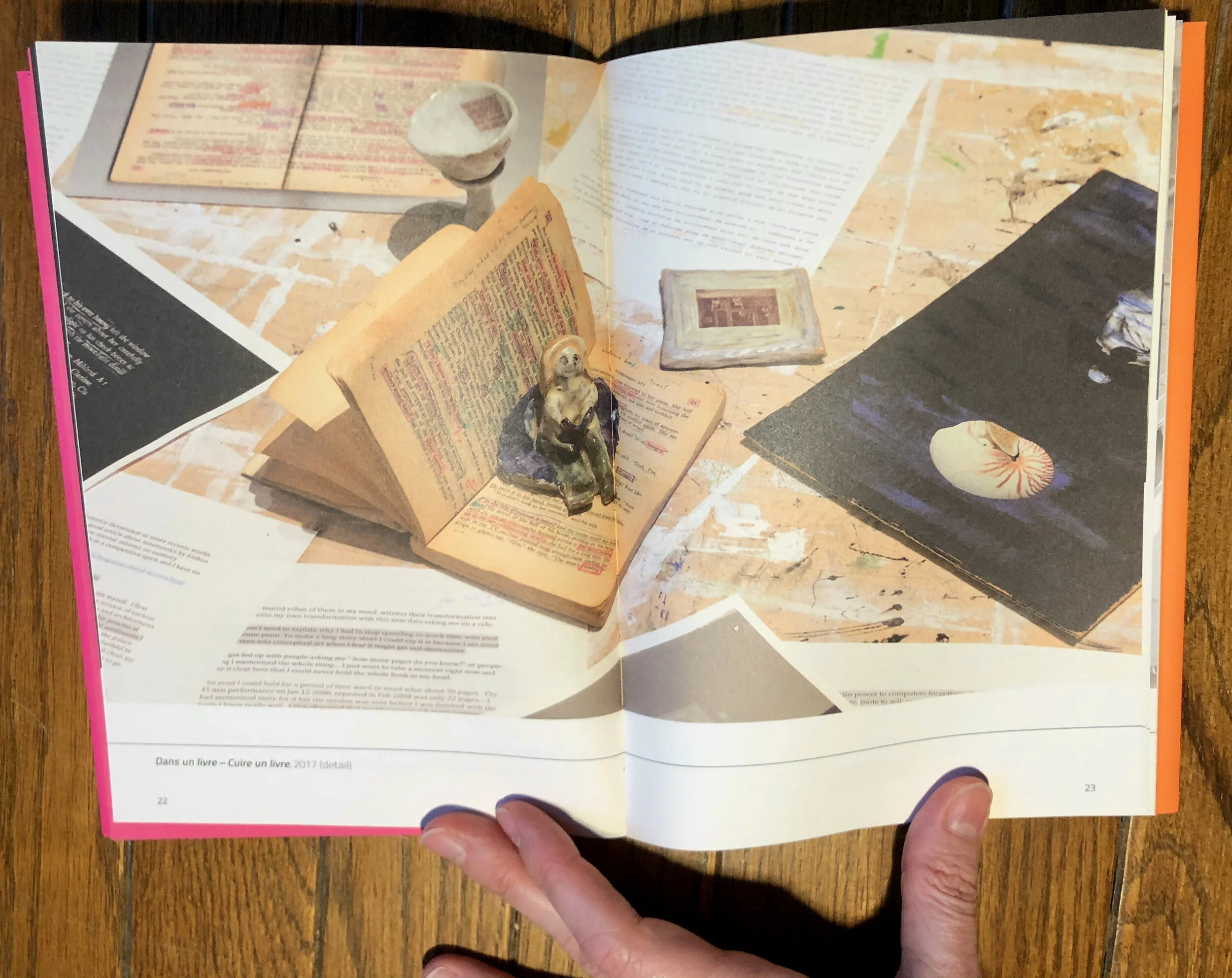

CAMPBELL, JAMES D., Visual Arts, Ève K. Tremblay, BORDER CROSSINGS, issue 146 June 2018
Image: Caractère, Eve K. Tremblay 2016, printed in The Imaginary Reader, Edited by Mary Nerland, published by Volt, Norway, 2016
NEAL, Patrick, The End of the World as we know it, HYPERALLERGIC, april 5th, 2013, NY
WAHJUDI, Claudia, Hungry City, Berlin, KUNSTFORUM INT. Oct-Dec 2012 (image: Vue de dos)
HAMMER, Erlend, Catalogue Bergen Kunsthall, Oh How time Flies, 2012
HAMMER, Erlend, avec texte de James D. Campbell, Catalogue Bergen Kunsthall, Oh How time Flies, 2012
Text by Justin Hoffmann Ève K. Tremblay Tales Without Grounds in the monograph Ève K. Tremblay- Tales Without Grounds, 2006:
“ What exactly makes these pictures, which were after all taken in real places, appear so futuristic. The photographs are not in fact the result of a digital imaging: the sites are really as shown, the human figures are made of flesh and blood, and the light and colour components are not at all artificial. So what is it that makes these depictions into visions, into metaphors of tomorrow’s agriculture. One reason is that the agricultural business that Eve K. Tremblay selected must actually be a very modern, forward-looking enterprise which applies hydroculture to grow its produce. Though the large water surface, which serves as the floor of the spacious and partially transparent building, appears peculiar to us, it is probably more common than we think. An astonishment that is basically indicative of our ignorance regarding current tendencies in food production "(...)It is not by chance that viewers associate film sequences with Eve K. Tremblay’s photographs. The pictures evidently reference a narrative. Various characters, who are engaged in mysterious actions, emerge without fully disclosing what they are up to. What is this young girl doing in these surroundings? Is she a farm labourer? But why doesn’t she wear protective clothing like the other workers or researchers? The title “Tales without Grounds” underscores the enigmatic quality of these works. “Without grounds” indicates that the photographs do not lend themselves to a clear-cut interpretation. Regardless of the title, the viewer nevertheless seeks explanations and interpretive links, such as those mentioned above. In any case, the works weave a web of memorable associations that is stretched along the tension points generated between agriculture and technology, and between humans and nature. “ (translated from german by Bernard Schutze)
Eve K Tremblay in the Canadian Encyclopedia
Ève Kateri Tremblay, multidisciplinary artist (born 1972 in Sainte-Agathe-des-Monts, QC). Ève K. Tremblay’s exhibits can be found in various artistic institutions, notably in Montréal, Toronto, New York, Zurich and Basel. Her work is included in the collections of the Musée d’art contemporain de Montréal and the Musée national des beaux-Arts du Québec (Québec City).
Photography
After studying literature at the Université de Montréal (1991–92) and theatre at the Neighborhood Playhouse School of the Theatre in New York (1995), Ève K. Tremblay obtained a Bachelor of Fine Arts with a major in photography (1997–2000) from Concordia University in Montréal. Since the beginning of her career as an artist, she has adopted an approach that is both autobiographical and inspired by literary fiction.In her photography series L’éducation sentimentale (2000), whose title refers to Gustave Flaubert’s novel of the same name, the artist depicts young girls wearing school uniforms in various solitary and introspective situations that sometimes evoke uncomfortable experiences of initiation. These photos are no doubt inspired by the contrast between Tremblay’s teenage years attending a private college(Collège Notre-Dame in Montréal)and the bohemian childhood she spent in the workshop of her ceramicist-sculptorfather, Alain-Marie Tremblay.
In her photographic series Unmanifested Still Films (2006), Tremblay presents photos shot on film sets, combining stillness and movement both in the image and in time — a reality of film’s technical processes and of cinematic fiction. The way the scene is perceived through the eye of the camera collides with the looks exchanged within and outside of the framed image. In her series Postures scientifiques (2005–06), Tremblay photographs scientists immersed in conducting experiments. Generally photographing them from behind, she captures various curvatures of the spine that evoke concentration, expectation and reflection, while denying audiences the opportunity to fully understand the work being carried out, as it remains hidden by the anonymous figures absorbed in their tasks.
…Ève K. Tremblay has devoted many years of her career to revisiting Ray Bradbury’s novel Fahrenheit 451 and to reflecting on its numerous underlying themes, especially neuroscience, mnemonics and philosophy. For her lengthy project Becoming Fahrenheit 451, she spent several months memorizing sections of the book and using photography and video to document her process. These documentation materials allow viewers to follow her professional and personal journey through various locales, various European and North American cities, and various collaborations that helped Tremblay in her memorization process. As part of this immense project, the artist performed EKTBF451/EKTFF451 (Ève K. Tremblay Becoming Fahrenheit 451/Ève K. Tremblay Forgetting Fahrenheit 451) in many venues between 2007 and 2013. During these live performances in exhibition spaces, she staged a mise en abyme of her work by enacting the creative and mnemonic process….
Extrait du texte critique de Marie-Ève Charron dans Le Devoir "...Les photos restituent des instants uniques que les porcelaines qui les côtoient au mur additionnent, étant le fruit de plusieurs cuissons exigées pour l’application de glaçures et différents transferts d’images (collages, dessins, photos). Tel un feuilleté, des temporalités hétérogènes se trouvent ainsi cryptées dans l’objet façonné avec la fragilité et la discrétion des souvenirs loin enfouis, quoique tenaces. Le cadrage serré des images trompe la perception de l’échelle de ces modelages qui sont bien des miniatures élégamment intégrées aux roches, au sable et à l’écume de mer, alors que leur titre évoque le monde invisible des bactéries...La suite de l’expo écarte la photo et se déploie en porcelaines, en dessins et en peintures, au sol et au mur. La gestualité et la touche de l’artiste, avec les crayons ou les pinceaux, s’affirment là où la main s’effaçait au profit de la clarté descriptive de l’image photo. Le regard bute alors contre la matière travaillée avec expressivité, intuition et naïveté. Sur ce spectre opposé du langage plastique, l’artiste explore encore le paysage où s’emboîtent des points de vue et des échelles différents. Les scènes sont évocatrices de relief en montagnes et de la silhouette de Manhattan, des territoires fréquentés par l’artiste qui vit entre Montréal et New York. Motifs et titres des oeuvres renvoient aussi librement à l’imagerie scientifique et à des figures pionnières de microbiologie et d’informatique (Lynn Margulis, Ada Lovelace)...»
Texte de Marie Fraser dans Emergence, Contemporary Photography in Canada
" Les oeuvres d'Ève K. Tremblay utilisent cette fixité ontologique de la temporalité photographique pour mettre en scène des instants narratifs où les actions sont maintenues dans un état perpétuel de suspension. Le moment où l'action va se produire est toujours retardé. L'expérience ne se concrétise pas, elle ne s'accomplit pas. La mise en scène ne sert donc pas à construire une unité mais à montrer que cette opération de suspension contient un potentiel d'anticipation. Plusieurs images d'Ève K. Tremblay explorent cette suspension en travaillant l'ambiguité entre la réalité et la fiction que peut produire une action lorsqu'elle est mise en scène par ses propres protagonistes. Dans la série d'images de lieux de tournage qui composent Unmanifested Still Films, cette spécifité temporelle de la photographie est soulignée par l'impossibilité de l'activité filmique de se manifester, de se déployer dans le temps. La photographie souligne sa spécificité et marque sa différence avec le cinéma, le terme still évoquant l'image arrêtée d'un mouvement."
« L’univers photographique de Ève K. Tremblay se situe à la frontière du réel et de l’imaginaire. Mêlant les références et les métaphores littéraires, scientifiques, et psychanalytiques, l’artiste construit ses séries photographiques sur le modèle des contes de manière à faire surgir le monde fantasmagorique de la psyché et d’explorer le rôle du langage et du regard dans la construction de la réalité. L’autofiction s’infiltre parfois pour mieux débusquer l’interdépendance entre l’observateur, sa technique, et l’objet visé. Élaborant des récits non linéaires et sans fin côtoyant le sentiment de l’étrange, elle invite à la libre association narrative. (...) La logique paradoxale qui sous-tend le travail de Ève K. Tremblay propose en contrepartie une approche interrogative de l’identité en mettant de l’avant le concept d’ambivalence où un état n’exclut pas l’autre mais s'en nourrit dans un irrégulier mouvement de balancier. L’artiste devient dans ces photographies le point de fuite autant que le point d’origine d’un univers équivoque où l’intériorité subjective et la réalité extérieure s’assimilent l’une l’autre. Sans s’épuiser dans la recherche d’une réponse, cette ambivalence laisse deviner les contours de possibilités multiples. Elle pose que regarder, percevoir, prendre acte, c’est également projeter sa conscience dans le monde pour en rechercher les formes dans lesquelles l’être peut se fondre.”
…
“ Dans la série Disparaître en bleu — Ein Spiel der Biosemiotik (2003), l’artiste dessine une sorte de récit elliptique dans lequel elle « entreprend de [s]e faire disparaître comme figure pour devenir une couleur, une idée, une méduse, un garçon ». Tout en maintenant le thème central de la transformation, cette série d’autoportraits décline un jeu fictionnel qui, à la différence de son travail précédent, présente non pas un climat de peur et de résistance devant la mouvance intérieure mais suggère un engagement actif dans ce mouvement. On observe dans ce « jeu de biosémiotique » une succession de métamorphoses à travers lesquelles se dit un devenir qui abolit toute volonté de s’accrocher à une identité fixe. Ève K. Tremblay y effectue une sortie de soi pour concevoir une autofiction déconcertante gouvernée par l’algèbre prodigieuse d’un songe, mais d’un songe dirigé et délibéré.”
Leila Topic (commissaire Musée d’art contemporain de Zagreb) sur HRT. radio
“...Precisely in the video rental store Filmgalerie 451, through an accidental encounter in 2007, Canadian artist Ève K. Tremblay conceived her multimedia project Becoming Fahrenheit 451. The number 451 recalls, of course, the title of the novel by famous Sci-Fi writer Ray Bradbury- Fahrenheit 451, the elements of which have also been approprited in the film of the same title by François Truffaut.
The plot of this novel describes not that distant future in the second half of 21st Century, in which books are considered a threat to the social peace. Books and reading, described by Bradbury, lead to unrest, reflexion on the current state of affairs and consequently, to unhappy and rebellious individual. Therefore, the books have to be destroyed by specialized squads of firemen who are burning them – 451 degrees of Fahrenheit is indeed the temperature at which the book paper burns. Only the small groups of «heretics», the so-called «book people» have the mission to save the books from oblivion, in the immaterial shape- in their own minds, through the method of photographic memorization.
The finding and encounter at this Berlin video rental place has triggered the artist's recollection of Bradbury's book, which she had read many years ago. This was the beginning of her years long reflective and persistent effort of memorizing a part of Fahrenheit 451 book- a metaphorical attempt to «become a book.» Tremblay, who graduated in French literature in Montreal, and later photography, has used her knowledge and preferences for literary forms and visual arts, but also scientific texts, history of mnemonic systems and mechanisms, to create a unique ambiance consisting of video installations, photographs, essays, drawings, collages and assemblages at MK Gallery in Zagreb. “Poetical approach and philosophical contemplation have come into play with constant material experimentations;” writes the curator of the exhibition Zeljka Himbele, who lives in New York City. Furthermore, notes the curator, this ambiance is also the artist’s attempt to say goodbye to this longtime project which required such deep immersion...”
Texte de James D. Campbell, Shadowing the Self: Reflections on the Art of Eve K. Tremblay, in the book Ève K. Tremblay- Tales Without Grounds. ...As we have seen, Eve K.’s resonant images and oblique narratives have the power to instruct, unsettle, disturb – and displace. Her true content is often the unameable— that which is beyond or before language -- and we are at first looking in from the margins. It is never very long, however, before we have stumbled into the mise-en-abyme and find ourselves at dead center of these magnetic narratives, and enter their “third space” as a willing accomplice in the making of meaning. At the same time, we are resolutely hooked, and the images speak to us in a language far more intimate than any cinematic fable of how the most seductive of appearances often camouflage the most profound private lack. ... Eve K.’s shadowing of self and Other is carried out with remarkable deftness, subtlety, subversive poetry -- and bravery. Her courage is incandescent, as she makes her transitional spaces our own. Our ongoing entanglement with her images is integral to that exhilaration we have always felt when ‘reading’ the most profound works of contemporary art.
Ève K. Tremblay L'Éducation Sentimentale - Ciel Variable #53, Texte de Lyne Crevier
Dans sa plus récente production, L’Éducation sentimentale, Flaubert sert de prétexte à un « arrêt sur images » littéraires, cinématographiques, photographiques. Une série qui flirte avec l’art du désir. Désir de mettre en scène des sujets, à peine sortis de l’adolescence, évoluant dans ces lieux interdits, étouffants, anonymes que peuvent représenter les collèges privés. En préférant la métaphore au détriment d’un réalisme trop cru. Ses portraits se montrent donc tour à tour inquiets, douloureux, parfois ingénus ou sereins. Proches d’une idéalisation vouée à l’éternité… Ainsi un parfum rohmérien se dégage de ce charmant « conte moral », signé Tremblay, où la séduction teinte largement ses compositions. Par là, elle recherche volontairement l’artificiel pour débusquer des pans d’une histoire faussement simple. Car chaque cliché est mûrement réfléchi et empreint d’une froideur, d’une élégance, voire d’une rigueur, absolument étonnantes pour une si jeune artiste. À l’image de ce que Barthes avance dans La Chambre claire : « Au fond, la Photographie est subversive, non lorsqu’elle effraie, révulse ou même stigmatise, mais lorsqu’elle est pensive. »
… À l’exemple de sa grand-mère (Mimi) et de sa grand-tante (Jeanne), duo d’inséparables qui n’en ont toujours fait qu’à leur tête. Résultat : la photographe en a tiré une série de portraits, dont notamment celle intitulée Mimi et Jeannedans le Hall of Fame. (...) Des femmes (entre 70 et 80 ans) qui entendent ne pas perdre une seconde de ce que la vie peut encore leur offrir. En imitant les attitudes de coquettes. On est ici au cœur d’une fiction qui frise le fantastique. Un fantastique soft, par ailleurs assez troublant. Sont-elles les prêtresses d’une société secrète ? Ou des personnages extraits d’un film comme Arsenic et vieilles dentelles ? Qu’importe, Ève respecte assez leur brillante dérive théâtrale et saisit même en filigrane toute la mélancolie (active) que recèle un tel jeu des apparences. Que sous le maquillage, la variété des costumes, se dissimulent des tigresses prêtes à se battre à mort pour une vie pleine, en laissant volontiers à d’autres leur part d’ombres. Le grand âge aidant, elles s’offrent donc un « élixir de jeunesse », grâce au goût de l’artifice, toujours renouvelé. Ces deux séries couleur montrent ainsi que les femmes (peu importe leur âge) sont plurielles, qu’il n’existe pas d’essence de « la » femme, qu’on n’est pas femme par nature, qu’on a, aussi, comme l’ont relevé Deleuze et Guattari, à « devenir femme».
Leila Topic (commissaire Musée d’art contemporain de Zagreb) sur HRT. radio
“...Precisely in the video rental store Filmgalerie 451, through an accidental encounter in 2007, Canadian artist Ève K. Tremblay conceived her multimedia project Becoming Fahrenheit 451. The number 451 recalls, of course, the title of the novel by famous Sci-Fi writer Ray Bradbury- Fahrenheit 451, the elements of which have also been approprited in the film of the same title by François Truffaut.
The plot of this novel describes not that distant future in the second half of 21st Century, in which books are considered a threat to the social peace. Books and reading, described by Bradbury, lead to unrest, reflexion on the current state of affairs and consequently, to unhappy and rebellious individual. Therefore, the books have to be destroyed by specialized squads of firemen who are burning them – 451 degrees of Fahrenheit is indeed the temperature at which the book paper burns. Only the small groups of «heretics», the so-called «book people» have the mission to save the books from oblivion, in the immaterial shape- in their own minds, through the method of photographic memorization.
The finding and encounter at this Berlin video rental place has triggered the artist's recollection of Bradbury's book, which she had read many years ago. This was the beginning of her years long reflective and persistent effort of memorizing a part of Fahrenheit 451 book- a metaphorical attempt to «become a book.» Tremblay, who graduated in French literature in Montreal, and later photography, has used her knowledge and preferences for literary forms and visual arts, but also scientific texts, history of mnemonic systems and mechanisms, to create a unique ambiance consisting of video installations, photographs, essays, drawings, collages and assemblages at MK Gallery in Zagreb. “Poetical approach and philosophical contemplation have come into play with constant material experimentations;” writes the curator of the exhibition Zeljka Himbele, who lives in New York City. Furthermore, notes the curator, this ambiance is also the artist’s attempt to say goodbye to this longtime project which required such deep immersion…

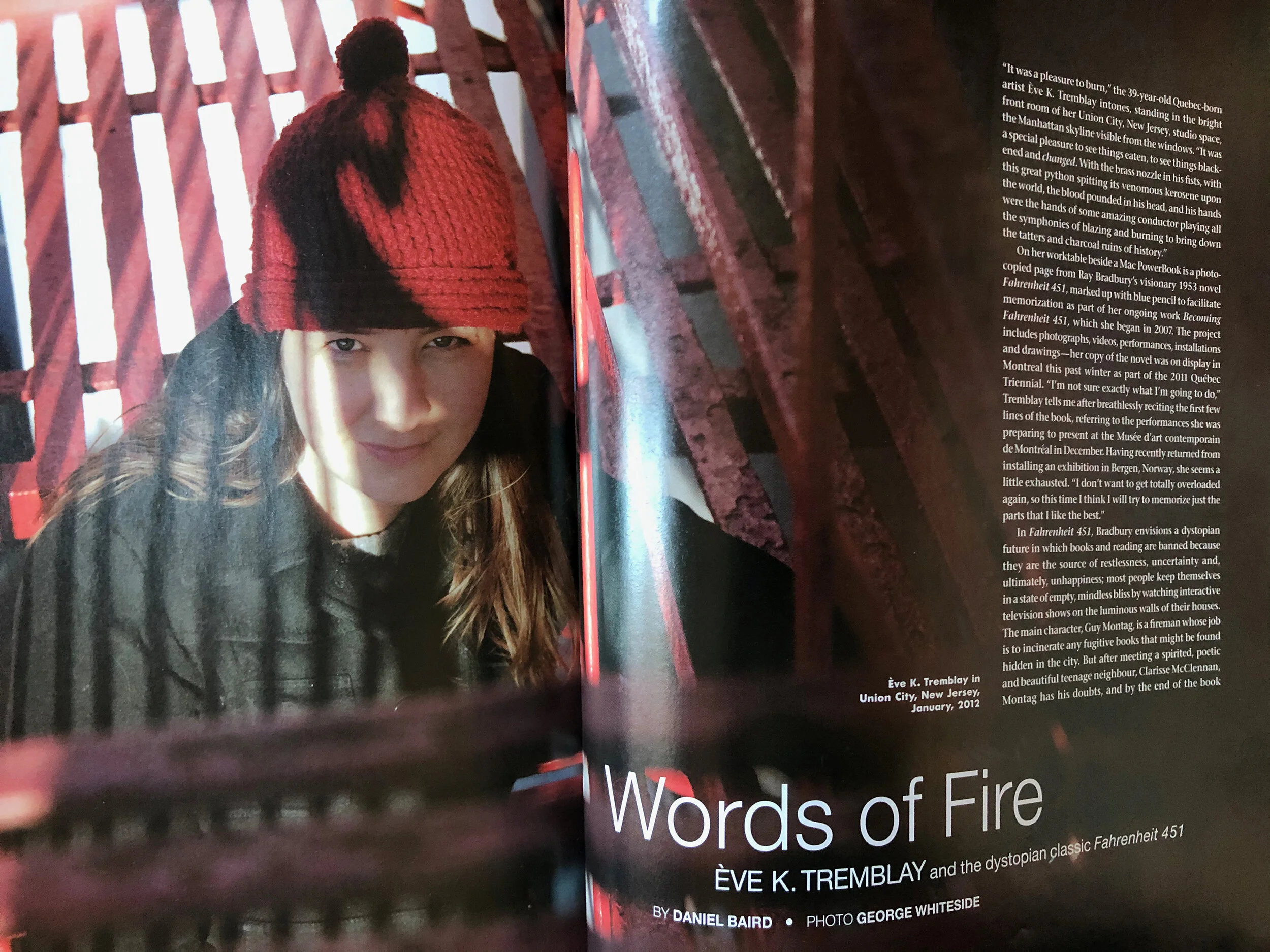

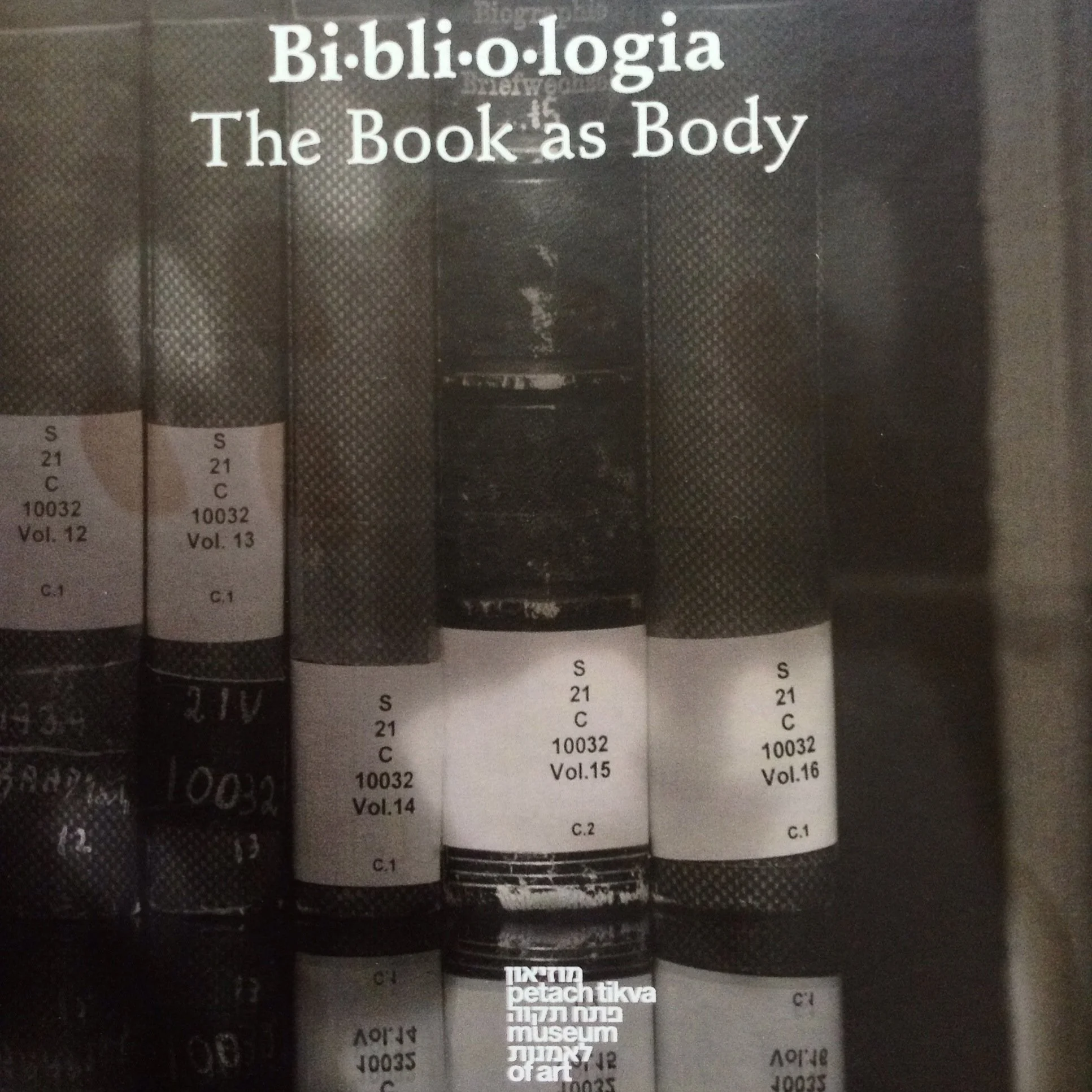
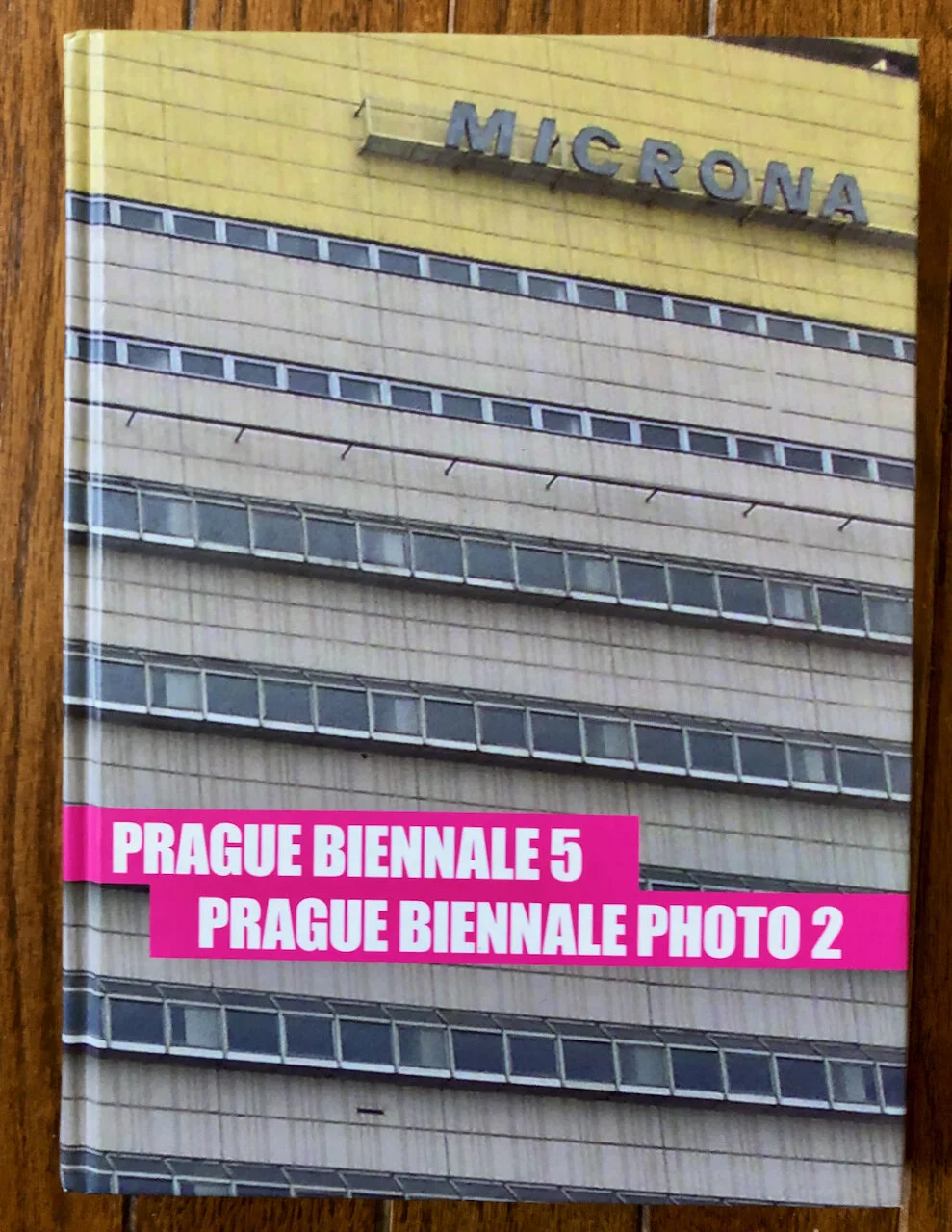
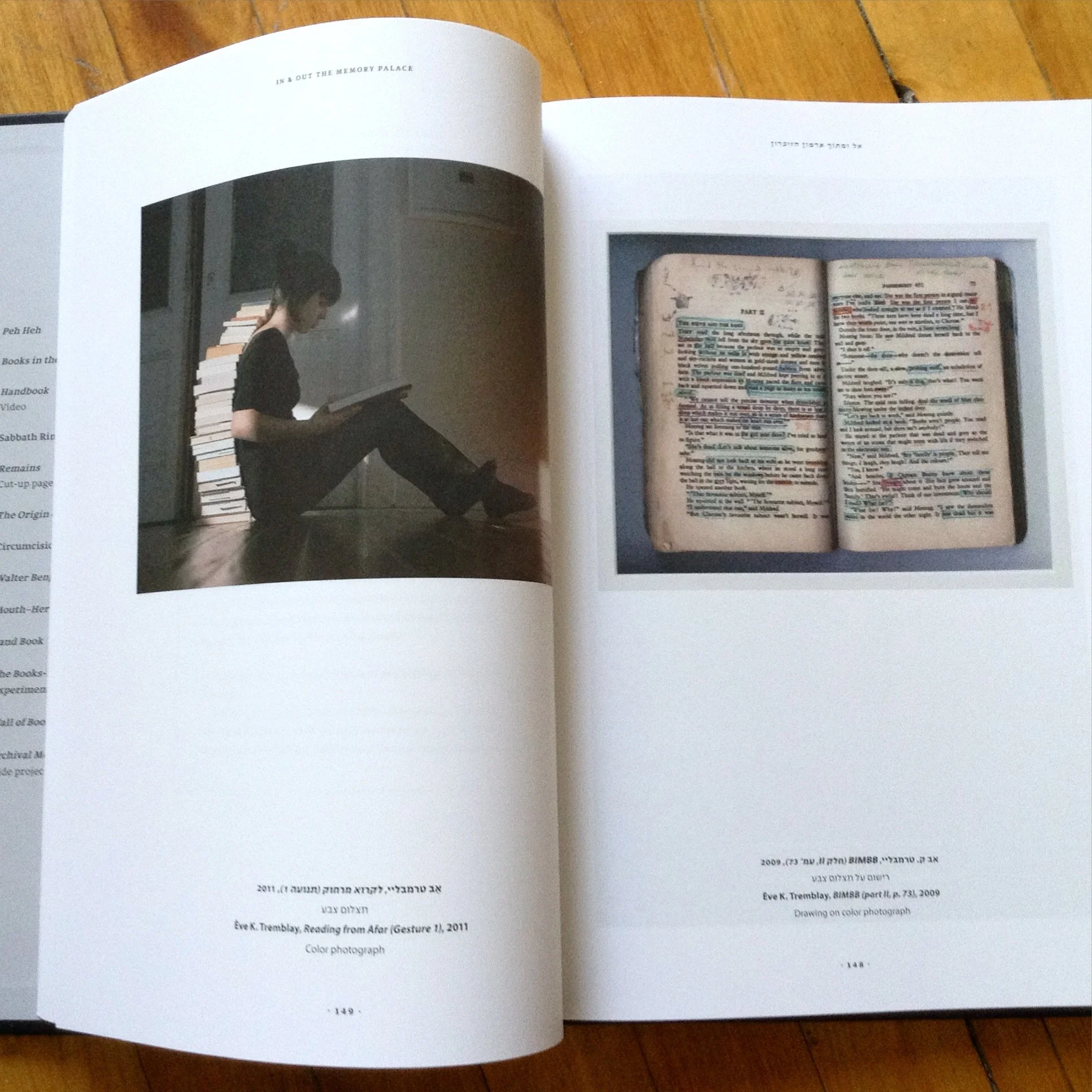













![“ Dans la série Disparaître en bleu — Ein Spiel der Biosemiotik (2003), l’artiste dessine une sorte de récit elliptique dans lequel elle « entreprend de [s]e faire disparaître comme figure pour devenir une couleur, une idée, une …](https://images.squarespace-cdn.com/content/v1/5ee8e9b9b7e7db4c7e28d4a1/1600900743343-B02CXN25VRLV7GNFB9T8/echocouverture.jpg)